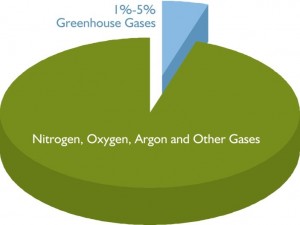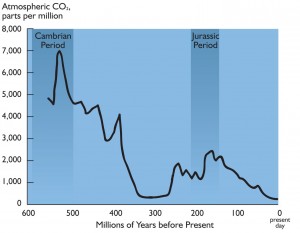Increased Human Emissions has its Benefits
Politically-funded and agenda-driven scientists who have built their careers on the theory that the exhaust from the burning of fossil fuels leads to a dramatic increase in temperatures and “the greenhouse effect” and who live well on the $2.6 billion dollars a year of Federal grants for global warming and climate change research cling to this theory and bend the data spread to support the glorified claims in their reports and papers. This is a well-informed, well-reasoned understanding of the National Climate Assessment (NCA) report, which is an exercise in political science, not climate science. Marlo Lewis of the Competitive Enterprise Institute rightly called it “an alarmist document to scare people and build political support for unpopular policies such as carbon taxes, cap-and-trade, and EPA regulatory mandates,” in his May 6 analysis on FoxNews.com.
While the NCA (and Obama talking points), use the term carbon “pollution,” the “greenhouse gas” supposedly causing most of the trouble, carbon dioxide (CO2) is a natural substance essential for the survival of all life on the planet. Plants need CO2 to grow and conduct photosynthesis, the natural process that creates food for animals and fish at the bottom of the food chain.
In fact, the increased atmospheric concentration of CO2 increased agricultural output and production by $3.2 trillion between 1961 and 2011. Thus, the documented effects of increased carbon dioxide in the atmosphere have been positive so far.
Even with increasing human CO2 emissions, carbon dioxide is still a trace gas in the environment, constituting just 0.04 percent of the atmosphere Figure I shows that greenhouse gases compose 1-5 percent of the atmosphere, and Figure II demonstrates that CO2 composes only 3.62 percent of greenhouse gases. We still live in a world starving for carbon dioxide, especially given the crucial importance of CO2 to plant and animal life. Data shows that during the Pre-Cambrian period (about 550 million years ago) CO2 concentration levels were 15 times greater than today with no record of any catastrophic results, shown in Figure III. Human and natural emissions of CO2 are only 4-5 percent of total global emissions.
In addition, uncontested global temperature data shows there has been no global warming for 17 years and 8 months now, even as human global CO2 emissions have continued to accelerate to unprecedented levels. The Economist reported last year that from 2000 to 2010, human carbon dioxide emissions totaled roughly 100 billion tons of CO2, which equaled about one-fourth of all human emissions since the industrial revolution in 1750.



“Thus, the documented effects of increased carbon dioxide in the atmosphere have been positive so far.”
Any talking points to reduce CO2 emissions sounds like just political talk. If the levels are not in the extremes and the environment is actually thriving off of it, why change anything?
“Politically-funded and agenda-driven scientists…”
They speak of the dangers of climate change, but the real danger is from the misinformation being spread by the “experts” as described above.
“We still live in a world starving for carbon dioxide, especially given the crucial importance of CO2 to plant and animal life.”
Go ahead and see if experts in agriculture and farming support the liberal view of “environmentalism.”
A point of curiosity:
Over the past century and a half, atmospheric CO2 has increased from about 3 parts per 10,000 to about 4 parts per 10,000, or by 1 hundreth of 1 percent. CO2 is just one of several “green house” gases which include molecules of H2O, (water vapor.) Now, by what percent has that 1 hundreth of 1 percent increase in atmospheric CO2 caused the aggregate “green house” factor of all gasses present in the atmosphere to increase?